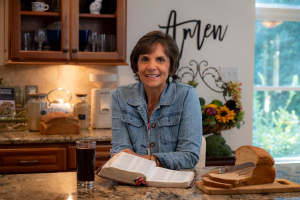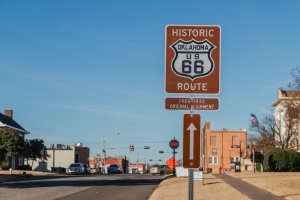Myths Exposed on Charismatic Christianity in America
Charismatic churches are growing in number in the Unites States, but many Americans still have inaccurate assumptions about the particular brand of Christianity, according to surveys released Monday.
Many people believe that charismatic Christianity is almost exclusively a Protestant phenomenon, but research shows that one-third of all U.S. Catholics (36 percent) fit the charismatic classification, according to the new Barna study. And nearly one-quarter of all charismatics in the U.S. (22 percent) are Catholics.
Charismatic Christians are defined in the study as those that say they have been "filled with the Holy Spirit" and believe in "charismatic gifts, such as tongues and healing, are still valid and active today."
Another misconception is that charismatic churches belong to a strictly separate group of denominations. In reality, charismatic churches have crossed denominational boundaries in recent years. A Barna survey of senior pastors reveals that seven percent of Southern Baptist churches and six percent of mainline churches are charismatic.
There are also widespread beliefs that charismatic churches tend to be small, relatively unsophisticated congregations that are more likely to be led by female pastors. However, research suggests that congregations are about the same size as those of non-charismatic Protestant churches and are also actually more likely to use technological applications – including large screen projection systems – evaluated in the study.
Moreover, charismatic and non-charismatic Protestant churches have the same portion of churches led by a female senior pastor (nine percent).
Charismatic and Pentecostal Christians over the past decade have grown from about 30 percent to 36 percent of American adults, or about 80 million people. One out of every four Protestant churches in the United States (23 percent) is a charismatic congregation.
George Barna, who directed the research projects, commented that the growth in the charismatic and Pentecostal movements in America is not surprising because it matches the current cultural trend in mainstream society.
"The freedom of emotional and spiritual expression typical of charismatic assemblies parallels the cultural trend toward personal expression, accepting diverse emotions and allowing people to interpret their experiences in ways that make sense to them," Barna explained. "It is not surprising that the Pentecostal community in America has been growing."
He added that he expects charismatic Christianity will continue to grow.
"We are moving toward a future in which the charismatic-fundamentalist split will be an historical footnote rather than a dividing line within the body of believers," Barna predicted. "Young Christians, in particular, have little energy for the arguments that have traditionally separated charismatics and non-charismatics. Increasing numbers of people are recognizing that there are more significant arenas in which to invest their resources."
For the most part, the profile of the typical charismatic congregation is nearly the same as that of evangelical, fundamentalist and mainline Protestant churches. Four out of five (80 percent) have a full-time, paid pastor; the senior pastor is, on average, 52 years old (the same as other Protestant churches); and the weekly adult attendance is nearly equivalent to other Protestant bodies (82 adults at Pentecostal gatherings compared to 85 adults at all Protestant churches).
Yet there are significant differences between charismatic and non-charismatic congregations.
Non-charismatic congregations tend to have a larger annual operating budget, $149,000, compared to the budget of Pentecostal ministries with $136,000. Similarly, non-charismatic churches on average spent more in paying their senior pastor, $47,000 annually, than charismatic pastors who receive a compensation package averaging about $42,000.
Yet perhaps the biggest distinction between the two is the level of education of the pastors. A significant majority of senior pastors of non-charismatic churches (70 percent) have graduated from a seminary. In comparison, not quite half of charismatic pastors (49 percent) have a seminary degree.
The report is based on a nationwide telephone survey conducted by Barna in December 2007 among a random sample of 1,005 adults, age 18 and older. It also contains information from a nationwide phone survey among a random sample of 1,220 senior pastors of Protestant churches.



























